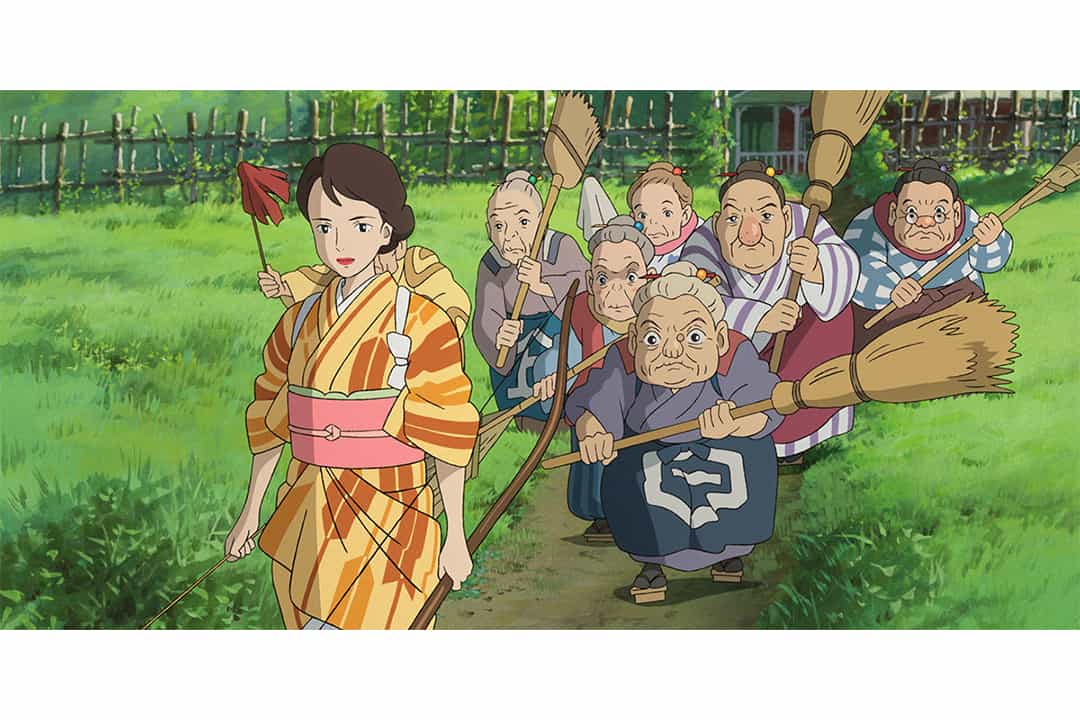Japanese anime director Hayao Miyazaki has a way of weaving reflections on life into his fairy tales, which tinge his works with serenity and introspection. His latest film, The Boy and the Heron, was one of the runners-up of the Toronto International Film Festival 2023 People’s Choice Award and arrived back in theatres again this past December. The Japanese title for The Boy and the Heron is “How Do You Live” — the same name as the classical Japanese novel gifted to the 12-year-old protagonist, Mahito, by his mother. The answer to this somewhat artless existential question is given in the boy’s own name, which means “the sincere one.”
At this stage of his career, Miyazaki is adept at employing signs and symbols from earlier works to construct an elaborate fictional universe. These details are probably more about self-reference than fan service, but the audience’s interpretation is still essential to Miyazaki’s films, as it is to any creative work. What are some of the philosophical ideas that the audience can glean from Studio Ghibli’s symbolism?

The authenticity of childhood identity
Many of Miyazaki’s adventures — think the cat bus and Totoro that only Satsuki and Mei can see, and the talking cat that only Kiki can hear — are exclusive to children. Their innocence represents an identity yet to be developed. Through these adventures, where they are faced with choices, the young protagonists construct their identities and achieve transcendence.
In this last Ghibli movie, Mahito, at the beginning, is traumatized by the upheaval of World War II. Shortly after his family’s relocation to the countryside, Mahito stumbles across a derelict tower that serves as a gate to the fantasy world, where he finds his place in the family and the world. Notably, Mahito discovers the tower by squeezing through an impossibly narrow tunnel while chasing after a heron.
Through this adventure, the values Mahito learns are love, authenticity, and even a flavour of unconditional acceptance of existence extolled by Nietzsche. By putting a piece of himself in this character, Miyazaki allows us to empathize with his reflection on existential questions.
In another Studio Ghibli movie, Spirited Away, by going through a tunnel, Chihiro, the protagonist, discovers a bathhouse for spirits. Here again, by holding on to her identity and her name despite her circumstances, she holds true to herself, unyielding to the gaudiness and greed of the bathhouse. The question of identity is a thread that has been present and evolved in Studio Ghibli movies throughout the years.
A living universe
Like the tiny unborn souls in The Boy and the Heron, Warawara the forest spirit in Princess Mononoke, and Susuwatari in My Neighbor Totoro, the guiding spirits in Spirited Away may originate from Japanese Shinto religion and folklore, where spirits are thought to roam and inhabit the world. That’s why we see so many shrines dedicated to natural forces, beings and landscapes throughout Japan: the Shimogamo Shrine for thunder, the Heian Shrine for previous emperors, and Fushimi Inari-taisha for rice and agriculture.
Furthermore, the modern retelling of ghost tales, or Kaidan, is a popular genre in Japanese anime, where ghosts are represented either as incarnations of strong human emotions and wills, or inhabitants of nature disturbed by human activities. My personal favourites are Mushishi, Mononoke, and Natsume’s Book of Friends.
In Miyazaki’s films, forests are used to represent the ultimate embodiment of nature and sacredness. In particular, Miyazaki emphasizes the harmony and equality between natural beings and human beings. Miyazaki films such as Nausicaä of the Valley of the Wind, Princess Mononoke and My Neighbor Totoro teach that nature is a living, unitary entity as opposed to a resource for humans to exploit at will.
Beyond Japanese philosophy, this is a perspective shared by German philosopher Martin Heidegger, as well as numerous Indigenous philosophies who preceded him. In Heidegger’s work, modern human society is propelled by the transition of technology from a means of revealing the potential of natural beings to a tool of excessive exploitation.
Greed and morality
In line with the reverence for nature is Miyazaki’s unequivocal denunciation of war. Almost all his films show the innocent lives of civilians implicated in war for naught. His attitude is summarized in the famous line from Porco Rosso, his most autobiographical work: “I’d rather be a pig than a fascist.”
On the other hand, the way Miyazaki has addressed the topic of environmentalism has evolved over the years from an outright denouncing of greed to a more complex picture of personal motivation. Achieving prosperity while respecting our duties toward Earth has been an ethical dilemma among environmentalists since the early period of Henry David Thoreau. In Miyazaki’s earlier film Castle in the Sky, the government agent Muska wants to take control over Laputa solely out of greed; in Princess Mononoke, the leader of Iron Town Eboshi only promotes iron and firearm production to feed her people; and in The Boy and the Heron, the pelicans who eat the unborn souls do so because it is the only way to survive in the underworld.
Miyazaki’s increasingly nuanced attitude allows the viewer to contemplate human ontology — what it means to exist as human beings — which, at times, seems to be incompatible with the laws of nature. How do humans balance morality and authenticity with survival, especially in a society with growing industrial pressure?
It is no wonder that Studio Ghibli movies are loved by people all around the world despite their diverse cultural backgrounds, ages, and ideologies. The themes of these movies — existential and ontological questions, meaningful connections, and environmentalism — sit squarely at the crossroads between Western and non-Western philosophies, addressing universal questions of the human condition. I can’t think of a better way to get through the long, bleak Toronto winter than with a Studio Ghibli movie, maybe while eating a tartine thickly spread with butter and jam that drips along the crust of the bread — just the way they’re shown in a Miyazaki movie.



No comments to display.